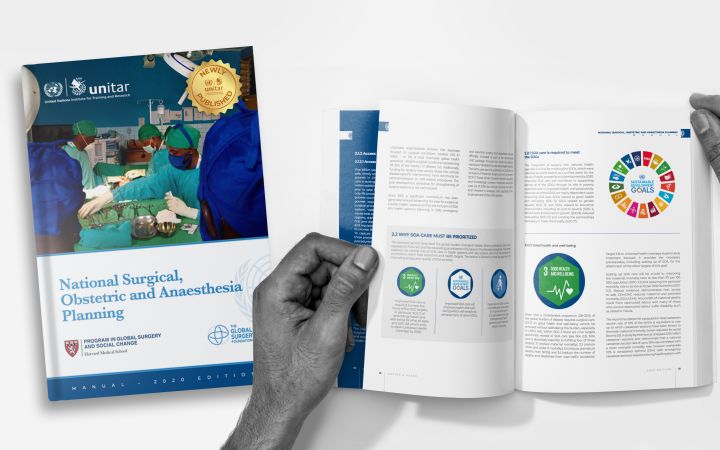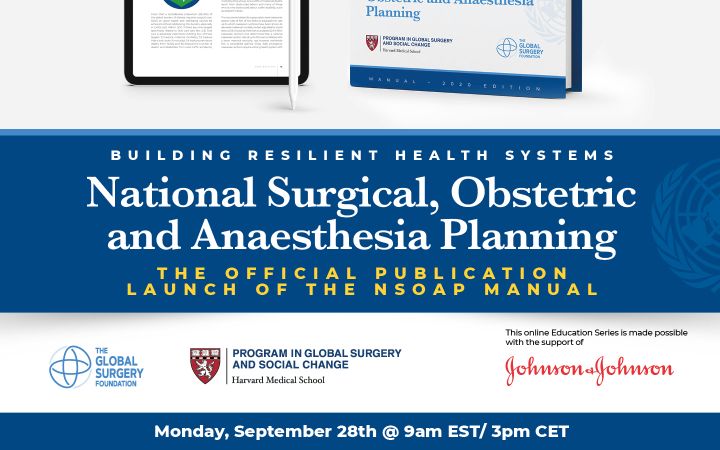Clinical conditions requiring surgical, obstetric and anaesthesia (SOA) services amount to 30% of the global disease burden, yet over 70% of the world’s population cannot access safe, timely and affordable SOA care when they need it (1). In many corners of the globe, in the words of Paul Farmer and Jim Kim, surgery has remained the “neglected stepchild of global health” (2). Nevertheless, the year 2015 was a landmark year for global surgery, drawing international attention to the scope and seriousness of the surgical disease burden.
Two seminal publications were released in 2015 that describe specific interventions essential for the advancement of surgery in low- and middleincome countries (LMICs). Volume 1 of the ninevolume series Disease Control Priorities, 3rd Edition (DCP-3) focuses on essential surgical care (3) and identifies 44 surgical procedures that address substantial needs as well as being cost-effective and feasible to implement in LMICs. The same year, the Lancet Commission on Global Surgery (LCoGS) released Global Surgery 2030: Evidence and Solutions for Achieving Health, Welfare, and Economic Development (1), which provides an overview of the state of surgical care in LMICs and sets a framework of recommendations, indicators and targets to promote universal access to safe and affordable surgical and anaesthesia care. The unanimous passage of the World Health Assembly resolution WHA68.15 – on strengthening emergency and essential surgical care and anaesthesia as a component of universal health coverage (UHC) – in 2015 (4) provided the political mandate to accomplish the recommendations set forth in the DCP-3 and LCoGS publications. The recommendations from these three documents range from scale up of the most cost-effective surgical procedures, to the development and monitoring of surgical capacity using specific indicators, to the creation of a National Surgical, Obstetric and Anaesthesia Plan (NSOAP) in each country. Further political momentum came through the Sustainable Development Goals (SDGs) adopted by the United Nations (UN) in 2015. While the UN’s previous Millennium Development Goals had only three targets pertaining to surgical care, within SDG3 “Good Health and Well-being”, four of the targets (reducing maternal, neonatal and under 5 mortality, reducing premature deaths from noncommunicable diseases, and reducing deaths from injury) will never be achieved without the scale up of surgical services. Furthermore, eight of the thirteen sustainable development goals are related to SOA care (5).
Since 2015, unprecedented interest has been generated within multinational organizations, governments, ministries, professional societies and clinicians to increase access to SOA services, with stakeholders driving changes in policy and programming surrounding surgical care. In many countries, these efforts are culminating in the development of National Surgical, Obstetric and Anaesthesia Plans (NSOAPs) that are fully embedded into a country’s national health policy, strategy or plan, which is critical to ensuring countrywide implementation and scale. Despite the increased awareness and discussion regarding the provision of surgical care in LMICs, there are still multiple obstacles faced in translating theory and existing knowledge into the provision of safe, affordable and timely surgery to those who need it. This manual acts as a guide to the components necessary to create a country specific NSOAP, drawing on the expertise and lessons learnt from countries and implementers around the world. From situation analysis to stakeholder engagement, from drafting to monitoring and evaluation, and from costing to governance, this publication provides a roadmap for national governments and ministries, funders, implementing partners and others seeking to create and implement an NSOAP that is integrated within existing and future national health policy, strategy or plans; an NSOAP must never be a standalone document or vertical plan. We hope that this publication serves as a useful guide for countries to adapt as they begin to address the gap in the provision of safe, timely and affordable SOA care around the globe through the development of NSOAPs.
The NSOAP Manual was published as a collaborative initiative between the United Nations Institute for Training and Research (UNITAR), the Harvard Medical School Program in Global Surgery and Social Change, and the Global Surgery Foundation. Its launch at a special Educational Online Event Series on 28 September 2020 was made possible by the generous support of Johnson & Johnson.
To download the NSOAP Manual free of charge, please click here.



